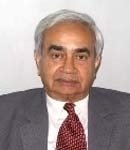Developments in Indo-US-Pak Relations
12 Apr, 2004 · 1360
P. R. Chari comments on three events that have implications for the triangular relationship between India, the US and Pakistan
The march of events within the triangle established by the United States with India and Pakistan is truly spectacular; and bewildering.
First, there was the disclosure of Dr. A. Q. Khan’s private practice. This was unsurprising since his claim to glory rested on his purloining the centrifuge designs of the Almelo uranium enrichment plant in the Netherlands where he was working during the seventies. He also launched a clandestine global operation to acquire the materials and equipment to establish an ‘indigenous’ enrichment plant in Pakistan. He was undoubtedly privy to the valuable assistance provided by China (nuclear weapons) and North Korea (missiles) to derive Pakistan’s nuclear option. The disconcert following these discoveries arose from surprise at the extent of Khan’s covert operations and the widespread tentacles of the nuclear black market revealed. Khan’s public apology on Pak TV followed thereafter by a Presidential pardon enacted a farce that deceived nobody. Clearly a deal had been stuck. The US would be allowed to interrogate Khan and his associates on the basis of CIA intelligence, supplemented by information available with UK’s MI-6 and, possibly, Israel’s Mossad to discover the full extent of his sub rosa nuclear trade.
Second, the military operations launched by the Pakistan Army in South Waziristan. This tribal area was traditionally left to administer itself with a minimum of intervention by the federal authority. The ostensible objective of these operations was to capture or kill Al Zawahiri and Osama Bin Laden, suspected to be hiding in this region, with several other al Qaeda members. Unavoidably, excesses were committed on the tribal population and ‘collateral’ damage inflicted by the Pakistani army. Some al Qaeda elements were captured or killed in these operations, with technical assistance being provided by the Americans, but neither Al Zawahiri nor Osama Bin Laden were located. President Musharraf’s stock within his Army and the United States may have risen, but the jihadis and Islamic fundamentalist parties are even more incensed with him now.
Third, the dramatic conferral of Major Non-NATO Ally (MNNA) status on Pakistan by the United States during Secretary of State Powell’s visit to Islamabad last month. This greatly perturbed India, although it has been promised this status if it chooses. India’s pique derives from an elevation of Pakistan in the American calculus; but more particularly from not being consulted nor informed about these US moves, whilst being conferred a ‘strategic ally’ sobriquet by the United States. MNNA status would allow Pakistan to acquire arms and training facilities on ‘friendly’ terms from the US. It is also placed in the same league as Israel, Japan, South Korea and other close partners of the US outside NATO, which envisages a long-term US-Pak engagement emerging. These new arrangements have obvious strategic implications for India’s security, but it should be noted that the US’s presence in Pakistan and Afghanistan will colour its perceptions towards the region.
What do all these events forebode? How will they impinge on South Asia? Has its strategic situation changed radically? Added together, the three events discussed above reveal with a startling clarity the vulnerability of Presidents Musharraf and Bush at the present juncture. How? President Musharraf needs to balance precariously now between several contradictory strands in his domestic and foreign policy. He must pander to the jihadis/Islamic fundamentalistsâ€â€


